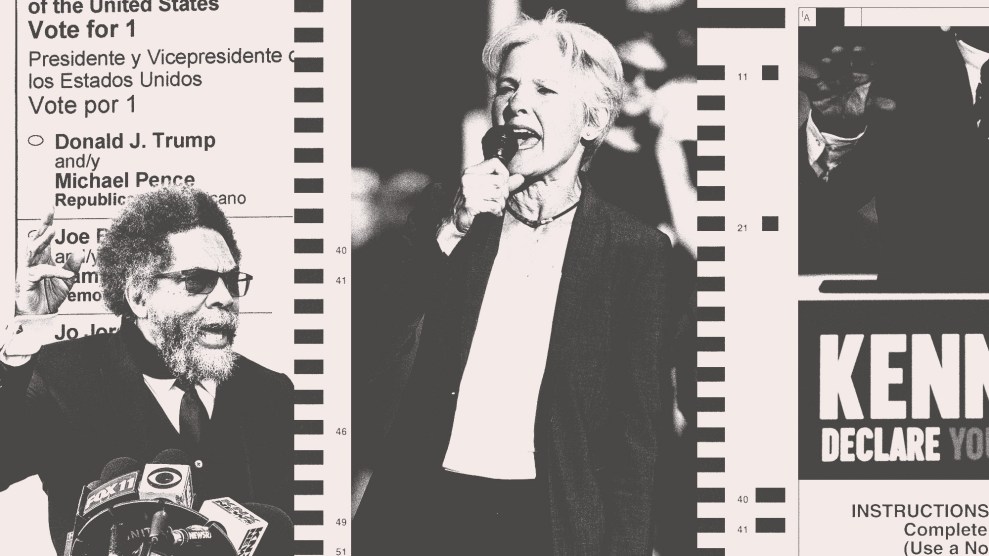Given Barack Obama’s game-changing use of new media during the campaign, there’s been a lot of excitement about how his team might use technology now that he’s President. Unfortunately, there seems to be some disagreement about what exactly the White House should be doing. The Center for American Progress, for example, has a new memo out on the White House new media strategy that could hardly be more off base.
While CAP’s Peter Swire, the author of the memo, mentions ushering in a “new era of government transparency” in the first paragraph, he ignores it afterwards. Swire’s central assumption seems to be that new media is for promoting “citizen participation,” not transparency. Swire holds up things like the Obama team’s “Open for Questions”—a trite exercise in public voting on questions for the president that added nothing to the usual “Town Hall” format—as examples of positive steps the White House is taking with new media. Who cares? What is so wonderful about asking the White House a question via internet instead of a letter, or hearing an Obama speech over YouTube instead of the radio? And then there’s this horrifying sentence, where Swire’s true intention is laid bare: “Looking into the future, we can see that the New Media team’s job of “answering Web comments” may overlap considerably with the Office of Correspondence’s “answering letters” job.
No no no no no please no. Swire has it backwards. The government doesn’t actually need more information and input from citizens. Citizens need more information—real information—from their government. A White House new media team full of people whose jobs “overlap considerably” with the jobs of the good folks in the Office of Correspondence would be an enormous waste. There’s a place for responding to citizens’ letters and forwarding sample opinions on to the president. But politicians who have at least some respect for their constituents will acknowlege that heartfelt letters and well-argued internet comments are rarely what’s driving policy-making in Washington. Responding to citizen input only scratches the surface of what information technology could do to really make government more accessible to ordinary people. Swire concludes:
The ideal model for citizen participation would utilize Web 2.0 technologies to enable valuable citizen input that can make a difference in government policy and actions while also fostering a sense of participation, so that those outside of the government feel that they are a meaningful part of the process.
This is the worst kind of political bullshit. “Those outside of the government” are made to “feel” that they are “a meaningful part of the process.” Is Rahm Emmanuel going to read a comment on WhiteHouse.gov one morning and say “Oh my god, why didn’t I think of that before!? I have to convince Barack to change course in Afghanistan!”
Swire served as an attorney for Obama’s new media team during the transition, so I worry that this is how the White House may actually see new media. If the White House is just going to use the internet to try to convince people of the most common of political lies—”I’m listening to you, individually”—count me out. Politicians and ordinary Americans both know that there’s only one way most citizens get their voices heard—at the ballot box. In between those fleeting moments of true accountability, politicians should waste less time pretending to respond to individuals’ concerns and spend far more time informing people about what, exactly, they’re doing. That’s the great promise of new media, and it’s one that the CAP memo totally ignores.
It’s utterly mindblowing that anyone could write six pages about new media in the Obama administration and not mention Recovery.gov. Instead of focusing on what the internet does poorly, the administration’s stimulus act website focuses on what the internet does well: delivering enormous quantities of information in clear, accessible, and useful ways.
The site’s mission statement mirrors what the White House new media team should really be focusing on: “education,” “transparency,” and “accountability.” Recovery.gov aims to “explain” the stimulus bill, “show how, when, and where the money is spent,” and “provide data that will allow citizens to evaluate the [stimulus bill’s] progress and provide feedback.” The site’s databases are still being built up, but already users can explore which agencies are getting stimulus money, find out what the estimated job impact is in each state, read through information on approved projects, and be directed to information on stimulus spending in each state. (Another great example of government making useful data available to the public is data.gov, which provides downloadable machine-readable datasets of government information.)
Instead of making citizens “feel” involved, Recovery.gov focuses on actually informing people so they can evaluate their leaders. You will note that “providing feedback” comes last in the mission statement. And the kind of feedback Recovery.gov encourages is actually useful. Instead of focusing on soliciting uninformed opinions and politically loaded questions (neither of which need or have ever needed soliciting), Recovery.gov asks citizens to report waste, fraud, and abuse.
Justice Louis Brandeis said that “sunlight is the best disinfectant.” The Obama administration doesn’t take any risks, political or otherwise, by giving YouTube speeches, asking people to vote on Town Hall questions, or soliciting comments on its website. Even the most corrupt politicians can make citizens “feel” involved and important. (Indeed, they often have a knack for it.) But it takes real political courage to open up your actions as a politician to outside scrutiny and let the sun shine in. And it’s that, not some counterfeit vision of “citizen participation,” that the White House’s new media strategy should be focusing on.














